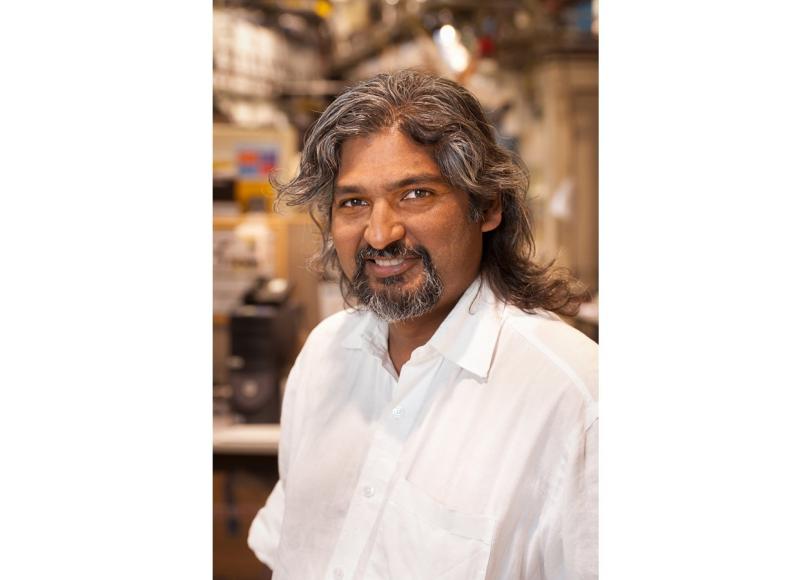DOE Energy Blog Does Q & A with SSRL Beamline Scientist
Fifteen years ago, SLAC National Accelerator Laboratory (SLAC) scientist Apurva Mehta volunteered to help a friend build beamline parts at the Stanford Synchrotron Radiation Lightsource (SSRL). Today, he's "still mucking around with beamlines."
By Niketa Kumar
from DOE Energy Blog
Fifteen years ago, SLAC National Accelerator Laboratory (SLAC) scientist Apurva Mehta volunteered to help a friend build beamline parts at the Stanford Synchrotron Radiation Lightsource (SSRL). Today, he's "still mucking around with beamlines."
In the latest 10 Questions, Dr. Mehta shares how he landed at SLAC and his adventures in a wide range from projects, from advanced semiconductors to ancient Greek pottery.
Question: Why did you pursue a career in science?
Apurva Mehta: My father was an engineer and he loved his job and loves science. Tucked away among assortment of books in the house, from Tolkien and Steinbeck to Tagore, Shaw and Woodehouse, were popular books on science and mathematics. As a kid I would randomly pull down a book and read it until it lost my interest.
As long as I remember, I wanted to be an engineer or a scientist. I began as an engineer, and ended up a scientist. But I didn't know what it really meant to be one until grad school. Naively, I thought science is as it's described in popular textbooks -- someone thinks of a big scientific problem, like gravity or the structure of an atom, does one or two key experiments and gets an answer that matches one at the back of the textbook and then moves on to the next problem.
It turned out to be very different from that. First, there are no answers at the back of the textbook. And then often the experiments didn't work out as I imagined, the data was noisy and there was a lot of hard thinking on how to deal with the uncertainties and ambiguities. But I also discovered that while scientists have very different approaches from each other, they often still arrive at the same conclusions. Science had space for individuality and more creativity than I had imagined. Luckily, the real boots-on-the-ground science that I discovered in grad school still held my interest.
Q: What led you to your current position at SLAC?
AM: A long, meandering path. I did my first synchrotron experiment at Brookhaven National Laboratory while I was a post-doc at Princeton studying instabilities in correlated electron systems. I started collecting more X-ray and then neutron diffraction data. Then, I heard through one of my mentors (a neutron scientist) that a friend of his from graduate school was looking for someone to design and commission a X-ray powder diffractometer at a beamline at SSRL. I volunteered to do so.
Again, naively, I thought I'll design the instruments, engineers will build them and I will move on. But the design kept changing as I started talking to other scientists about what types of experiments they would like to do with such an instrument, and changed more again as I talked to the engineers about how to build a machine that was sufficiently flexible to do many different experiments, but was still reliable and easy to maintain. At first, it was frustrating to discover that the perfect instrument I had designed did not work well for some experiments, but then it was exhilarating when we found a novel solution and the instrument evolved. In the end, when the beamline was opened to users two years later, I was very proud of it. Thirteen years later I am still mucking around with beamlines.

(Photo by Matt Beardsley)